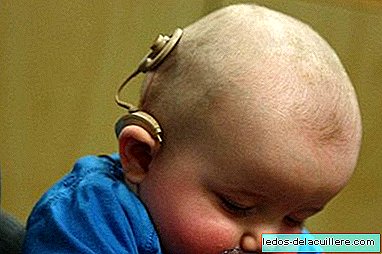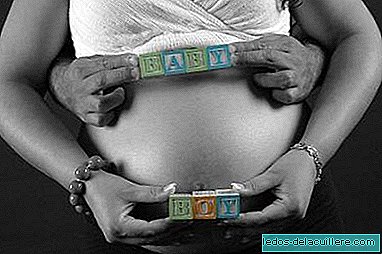
We have seen the characteristics and the different types of hearing aids, but we need to talk about a specific type of hearing aid: cochlear implant.
Its use is reserved for certain cases in which hearing aid amplification or medical or surgical treatments have been ineffective.
Thus, the cochlear implant is intended to replace the function of the damaged cochlea (which means that the child does not reach an acceptable level of auditory discrimination) by one or more electrodes that transmit the sounds directly to the fibers of the cochlear nerve, transformed by A processor in electrical stimuli.
The cochlear implant is composed of a microphone (who will be in charge of collecting the sounds and transforming the acoustic energy into electrical), a language processor (which will receive the electrical signal from the microphone, analyze it and decompose it at different frequencies for later coding) and the internal receiver with electrode system (He is responsible for transmitting electrical stimuli encoded by the processor to the cochlear nerve fibers).
Depending on the design of the electrodes and their stimulation strategy, cochlear implants can be divided into single-channel (there is only one channel for electrode stimulation) or multichannel (stimulation is performed at different levels within the cochlea). The most used are the latter because it is the one that most closely resembles the human cochlea.
On the other hand, depending on where the electrodes are located in the cochlear receptor, the implants can be extracochlear (the electrodes are located outside) or intracochlear (the electrodes are inside). The intracochlear ones are the most used at present.
Benefits and limitations
It is true that cochlear implants have allowed great progress in the world of hearing impairment, but we must not forget that the degree and severity of hearing loss influence the benefit and use of the cochlear implant.
The brain of the implanted child needs time to adapt to the hearing after the cochlear implant, generally showing a progressive increase in hearing performance as it is used.
Among the advantages that cochlear implants provide, we find that implanted children can speak more clearly and understand speech more easily. Similarly, the earlier the implant is performed, the development of speech and language will be more appropriate, as well as more efficient communication in the areas of your life.
In conclusion, we can say that children with cochlear implants have an adequate representation of the sound with hearing quality more than enough for your daily life.
On the other hand, the main limitation of the cochlear implant is that it is not possible to cover all the representation of shades existing in the human cochlea. Therefore, today cochlear implants try to provide enough stimulation to obtain a greater number of frequencies that serve the implanted child in their day to day.
After this first approach to main features of the cochlear implant We will talk more in depth about the selection criteria for candidates for a cochlear implant, as well as the main steps to be followed for their rehabilitation.












